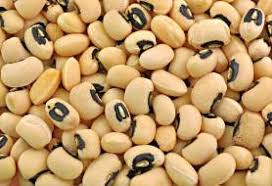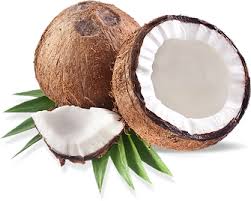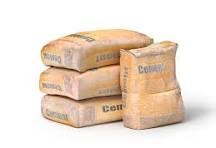Cowpea (Beans) Seed Cultivation and Cowpea (Beans) Flour Production in Nigeria; The Feasibility Report.

Nigerian agriculture is characterized by considerable regional and crop diversity. Analysis of this sector, particularly the food sub-sector, is fraught with serious data problems. However, the available statistics provide a broad overview of development in agriculture upon which we can make some broad generalizations about its role in economic development and structural change in Nigeria.
In the 1960s, the agricultural sector was the most important in terms of contributions to domestic production, employment and foreign exchange earnings. The situation remained almost the same three decades later with the exception that it is no longer the principal foreign exchange earner, a role now being played by oil.
The sector remained stagnant during the oil boom decade of the 1970s, and this accounted largely for the declining share of its contributions. The trend in the share of agriculture in the GDP shows a substantial variation and long-term decline from 60% in the early 1960s through 48.8% in the 1970s and 22.2% in the 1980s. Unstable and often inappropriate economic policies (of pricing, trade and exchange rate), the relative neglect of the sector and the negative impact of oil boom were also important factors responsible for the decline in its contributions.
On its diversity, Nigerian agriculture features tree and food crops, forestry, livestock and fisheries. In 1993 at 1984 constant factor cost, crops (the major source of food) accounted for about 30% of the Gross Domestic Products (GDP), livestock about 5%, forestry and wildlife about 1.3% and fisheries accounted 1.2%.
One of the food crops grown in Nigeria is Cowpea (Beans). Cowpea is an important source of protein in both urban and rural Nigeria; not surprising, therefore, is also the fact that Nigeria is also the largest producer and consumer of cowpea in all of Africa.
Cowpea grain contains about 25% protein, and 64% carbohydrate and its potential in the alleviation of malnutrition among resource poor farmers is inestimable. Cowpea flour is used in the preparation of akara (fried cowpea paste), danwake (cowpea dumplings) and moin-moin (steamed cowpea paste) and surely provides working mother the opportunity to prepare this favorite meal with the comfort it provides.
Cowpea can be grown under rainfed conditions as well as by using irrigation or residual moisture along river or lake flood plains during the dry season, provided that the range of minimum and maximum temperatures is between 28 and 30°C (night and day) during the growing season. Cowpea performs well in agroecological zones where the rainfall range is between 500 and 1200 mm/year.
In Nigeria, cowpea yield is very low. Grain yield ranges between 100 and 300 kg/ha. This is due to several constraints such as low yielding seedling, weather, parasitic weeds or insects, and diseases.
Cowpea (Vigna unguiculata) is one of several species of the widely cultivated genus Vigna. Four cultivated subspecies are recognised:
Vigna unguiculata subsp. cylindrica Catjang
Vigna unguiculata subsp. dekindtiana
Vigna unguiculata subsp. sesquipedalis Yardlong bean
Vigna unguiculata subsp. unguiculata Black-eyed pea
Cowpeas are one of the most important food legume crops in the semi-arid tropics covering Asia, Africa, southern Europe and Central and South America. A drought-tolerant and warm-weather crop, cowpeas are well-adapted to the drier regions of the tropics, where other food legumes do not perform well. It also has the useful ability to fix atmospheric nitrogen through its root nodules, and it grows well in poor soils with more than 85% sand and with less than 0.2% organic matter and low levels of phosphorus.
However, production can be improved through the use of improved pest-resistant and high-yielding varieties. Good land preparation, pest control, fertilizer application, harvesting and storage also help to improve production.
More than eleven (11,000,000) million hectares are harvested worldwide, 97% of which is in Africa. Nigeria harvests 4.5 million hectares annually. The crop can be harvested in three stages: while the pods are young and green, mature and green, and dry.
This report seeks to examine the financial viability or otherwise of establishing a cowpea (beans) seed plantation in Nigeria.
The size and locations of the farm is two hundred and ten (210) hectares of land located in Nassarawa State. Two hundred and five (205) hectares would be used for the farm while the remaining five (5) hectares would be used for the construction of the office, warehouse and other civil works.
At spacing of 20 x 75 cm for erect varieties and 50 x 75 cm for spread types, two (2) seeds/hole, 4–5cm deep, the farm would require four (30) kg per hectare and using improved seedling (IT- 93K– 452 – 1) with a potential yield of 1,500 kg/ha), the crop would mature in two (2) – three (3) months with three (3) production cycle per annum.
The farm would also have a five (5) tons per hour capacity seed cleaning plant. Upon processing of the unclean cowpea (beans) seed two percent (2%) of the product would be lost as admixture (dirt’s, stones and defective seeds).
The production capacity of the proposed business is three (3) tons per day operating a single shift of eight (8) hours per day and operating at eighty percent (80%) of the installed capacity for three (300) working days per annum.
Table of Contents
EXECUTIVE SUMMARY 1.0 Business Overview 1.1 Description of the Business 1.2 Vision and Mission Statement 1.3 Business Objective 1.4 Value Proposition 1.5 Critical Success Factor of the Business 1.6 Current Status of Business 1.7 Description of the Business Industry 1.8 Contribution to Local and National Economy 2.0 Agricultural Practice 2.1 Collection of seedlings 2.2 Planting 2.3 Manures and Fertilizers 2.4 Weeding and Herbicides 2.5 Climate / Irrigation 2.6 Harvesting and Yield 2.7 Soil Type 2.8 Diseases and Pests 3. Marketing Plan 3.1 Description of product 3.2 Product delivery 3.3 The Opportunity 3.4 Pricing Strategy 3.5 Target Market 3.6 Distribution and Delivery Strategy 3.7 Promotional Strategy 4. Cultivation / Production Plan 4.1 Description of the Location 4.2 Raw Materials 4.3 Cultivation / Production Equipment 4.4 Cultivation / Production Process 4.5 Production Cost 4.6 Stock Control Process 4.7 Pre-Operating activities and expenses 4.7.1 Operating Activities and Expenses 4.8 Project Implementation Schedule 5.0 Organizational and Management Plan 5.1 Ownership of the business 5.2 Profile of the promoters 5.3 Key Management Staff 5.3.2 Management Support Units 5.4 Details of salary schedule 6. Financial Plan 6.1 Financial Assumption 6.2 Start – up Capital Estimation 6.3 Source of Capital 6.4 Security of Loan 6.5 Loan Repayment Plan 6.6 Profit and Loss Analysis 6.7 Cash flow Analysis 6.8 Viability Analysis 7.0 Business Risk and mitigation factor 7.1 Business Risks 7.2 SWOT Analysis
Project Specification:
Additional Info
Get this Report
Direct bank transfer
To order the report, Please do pay the sum of ₦100,000 into
Account Name : Foraminifera Market Research Ltd
Account Number : 274 20 569 37
Account Name : Foraminifera Market Research Ltd
Account Number : 101 76 603 95
Account Name : Foraminifera Ventures
Account Number : 011 66 066 32
Make your payment directly into our bank account. Please use your Order ID as the payment reference. Your order will not be shipped until the funds have cleared in our account.
Instructions
After payment call us on 01 -29 52 413 / 08033782777 or email us at foraminiferamarketresearch@yahoo.com with the payment details. After payment confirmation, the soft copy of the report would be sent to you within 24 hours.



